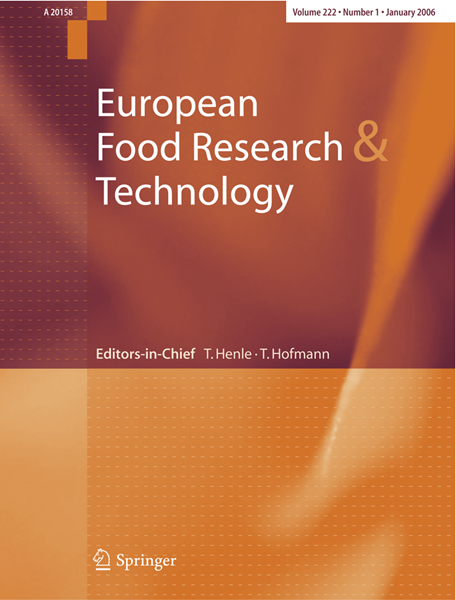Calcium effects on enzymatic glucose oxidation
Abstract
Glucose oxidase (GOx) finds use, often in combination with catalase, for protection of nutrients and flavor of liquid dairy products and fruit juices against oxidative deterioration. The effect of calcium ions on the rate of oxygen depletion in aqueous food models was investigated electrochemically in order to optimize use of GOx in calcium- rich food products as a prerequisite to studies of selected food and beverage. Oxygen depletion rate by GOx from Aspergillus niger in aqueous glucose solution was found to decrease in the presence of calcium in the absence of catalase but was not affected by calcium in the presence of catalase. Calcium ion activity rather than calcium ion concentration should accordingly be controlled for optimization of the used GOx. Free calcium concentration depletion rate as followed electrochemically was found to decrease for increasing glucose concentration while the rate of formation of hydrogen ions was unaffected by glucose concentration. Temperature effect (25–50 ℃) was moderate with an enthalpy of activation of ΔH# = + 23 kJ·mol−1 for calcium depletion by complex binding while rate of hydrogen ion formation was decreasing with temperature with ΔH# = − 8 kJ·mol−1. Calcium is concluded to affect glucose oxidation rate by interaction with the enzyme or with the enzyme substrate complex rather than with glucose as the substrate for oxidation or gluconate as the oxidized product.


 求助内容:
求助内容: 应助结果提醒方式:
应助结果提醒方式:


